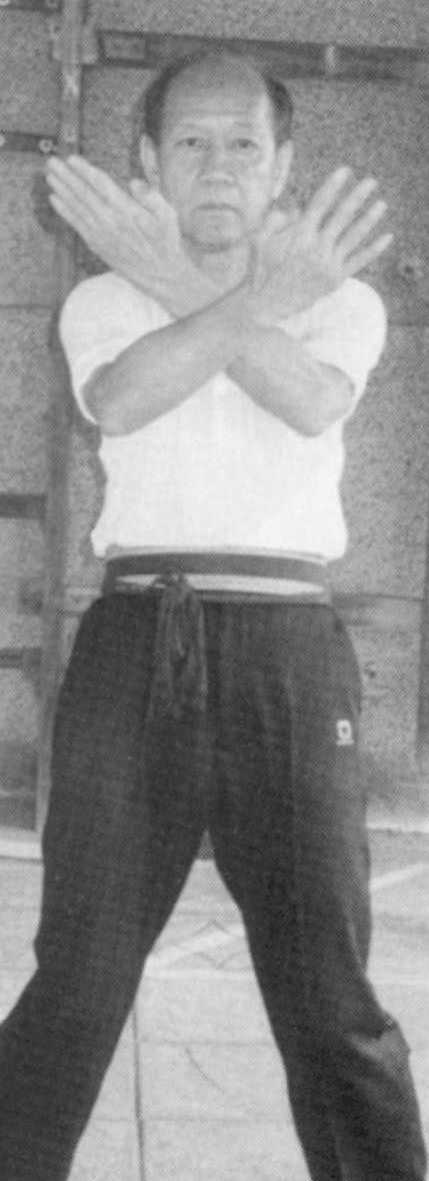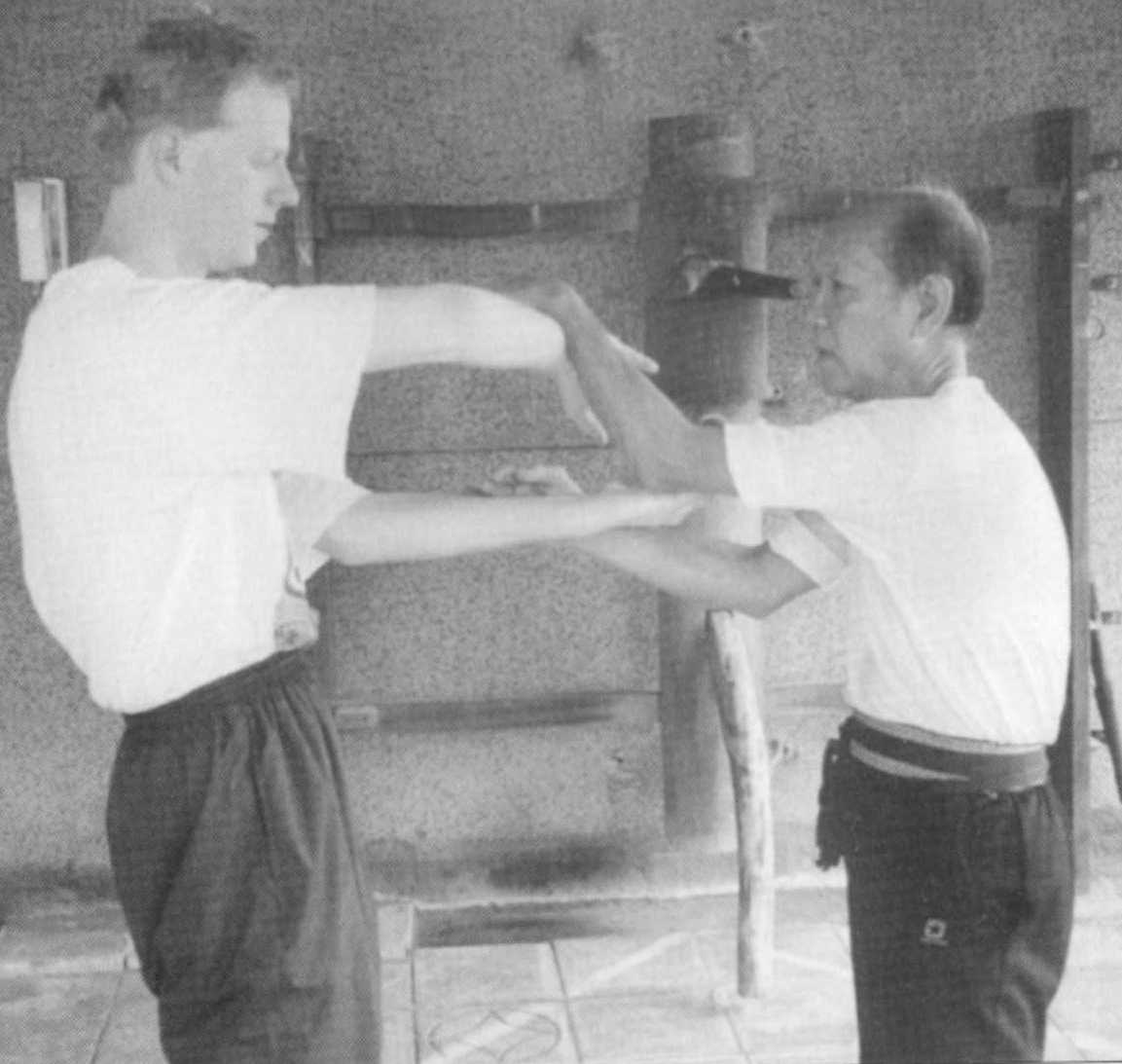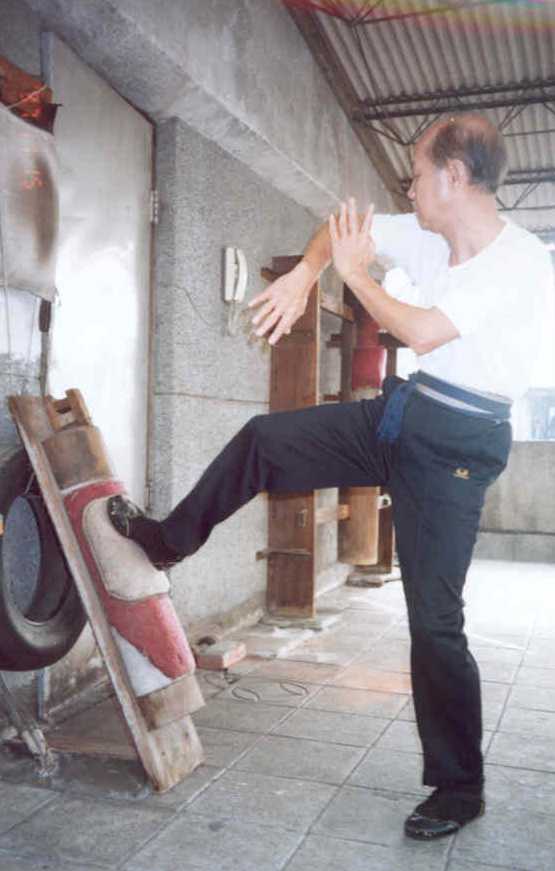Wing Chun Concepts

Center line
Passing from the top of the head to the base of the groin, the center
line serves as the foundation of Wing Chun combat theory. Given the
number of vital points along that line, the practitioner must concentrate
on attacking his opponent's center line while defending his own.
An awareness of the center line is developed in all stages of training.
Economy of Motion
Rather than waste energy on flashy techniques with fancier names, Wing
Chun embraces simplicity and efficiency. In all aspects of training,
the student seeks the simplest and most cost-effective way to attack his
opponent's center line.
Covering instead of Blocking
While many martial arts teach a student to block against specific attacks,
the Wing Chun exponent learns to cover his open areas through body positioning
and hand movements. Although you may not know what attack your opponent
will launch, you can position yourself in a way to limit his choices, and
move your hands to stop whatever comes in. Instead of answering A,
B, or C to a multiple choice question which has not yet been asked, the
practitioner is choosing D, "all of the above."
Simultaneous Attack and Defense
Wing Chun focuses on combining a defensive movement with an offensive
movement, or using offensive techniques that provide defense. In
this way, WC is structurally faster that those styles that teach one to
defend first, then attack. Drills and sticky hands help the student
improve this skill.
Contact Reflexes
The hand is truly faster than the eye. Further, your eyes can
deceive you. In Wing Chun, the student develops tactile sensitivity
in the arms, allowing him to feel his opponent's openings and sense oncoming
attacks. Thus, upon arm contact with an adversary (forming what is
known as a bridge), the Wing Chun exponent can react immediately to any
move his rival makes-- instead of first perceiving the movement, ascertaining
what it is, deciding upon a reaction, and finally moving. Contact
reflexes are developed through constant sticky hands practice.

Sifu Lo Man Kam says, "Hitting someone is easy. Not getting hit is hard." A Wing Chun practitioner is sometimes able to control both of his opponent's hands with just one of his own, leaving a free hand to attack. This particular technique is known as a trap. Sticky hands is the best way to refine trapping skills.
Sticky Hands
The jewel of the Wing Chun system, sticky hands practice teaches the
student to integrate Wing Chun's fundamental movements and combat principles
into a functional whole. Through sticky hands, also called "chi sao,"
one learns to react quickly and naturally to the ever-changing conditions
of a fight.
Body Alignment and Linkage
In order to transfer power, the Wing Chun practitioner must be able to
align her body correctly so that an optimal amount of force is conducted from
her center into her opponent. Correct practice and pondering of the forms helps develop this
sense of structure. Correspondingly, while the practioner will want to
"link" her body correctly to hit with his maximum potential force, she will
also want to be able to "unlink" as well, so that an opponent will not be
able to affect her center of gravity. This concept of linking and unlinking
can be developed through sticky hands practice and working the wing chun
wooden dummy.

The higher one kicks, the less stable his stance becomes. Wing Chun as taught by Sifu Lo Man Kam never kicks above the abdomen, and usually targets the opponent's knees or ankles. Further, they are integrated with hand techniques so as to increase power through total body unity.
Flexibility and unlimited application
Through sticky hands and associated drills, Wing Chun becomes tailored
to the student as an individual, taking into account physical abilities
and limitations, as well as mindset. He learns how to apply a relatively
small number of techniques to a wide variety of combat situations, while
maintaining an open mind so as to be ready to change if the need arises.
